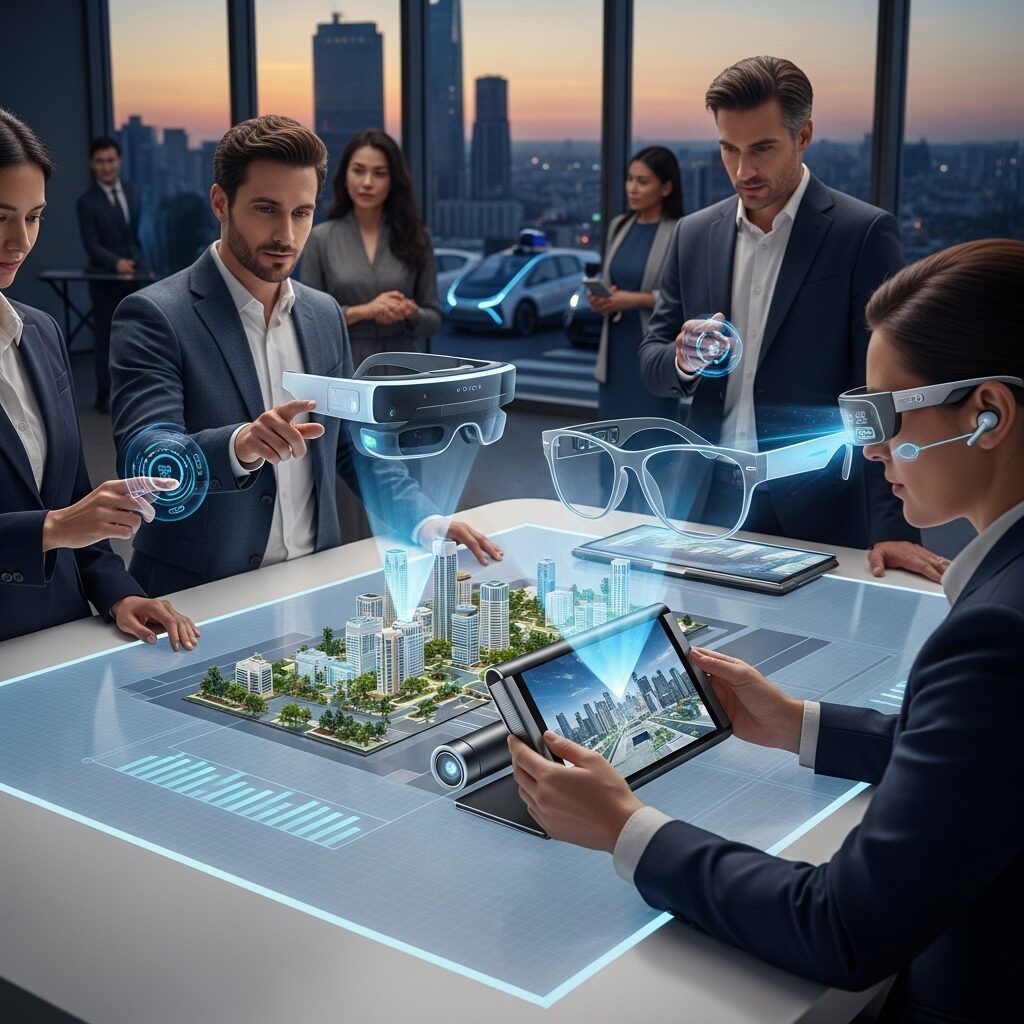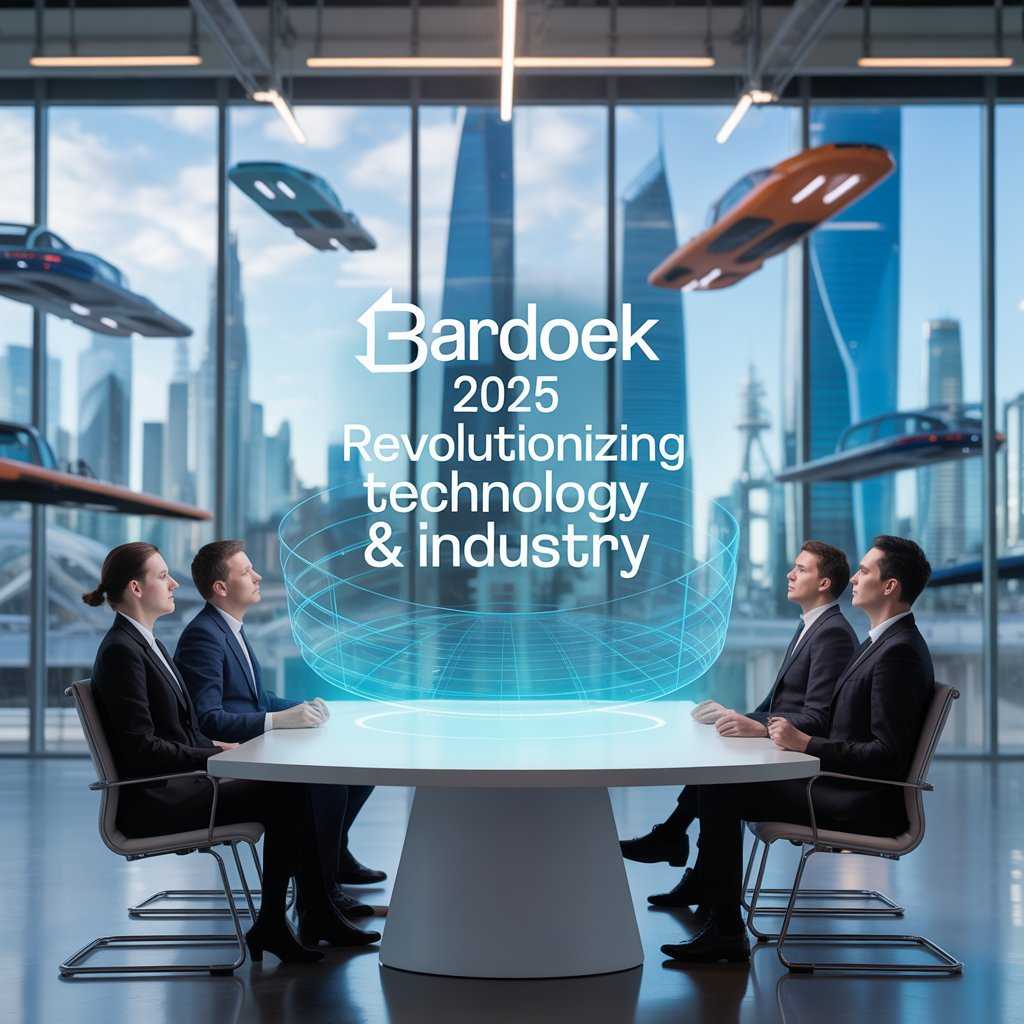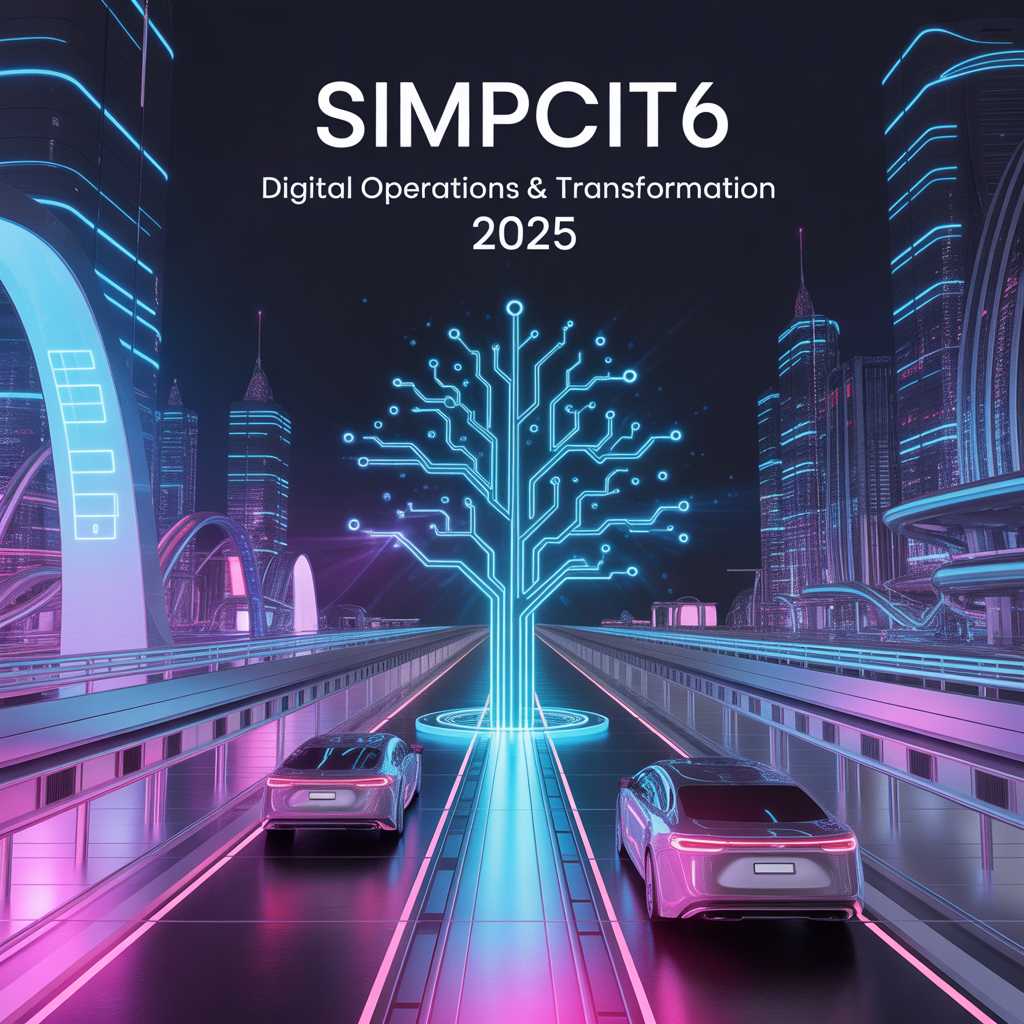Tech Giants Envision Future Beyond Smartphones he last two decades, the technology has been the center of our digital universe. It evolved from a simple communication device into an indispensable tool for work, entertainment, and social connection. This small rectangle of glass and metal dictates how we navigate the world, access information, and interact with each other. But the very tech giants who pioneered this revolution are now looking past it. They see a future beyond smartphones, and they are actively building it.
The relentless pace of innovation that defined the smartphone’s rise is slowing. Each new model brings only incremental improvements, a sign that the Technology may be approaching its peak. This plateau, combined with a saturated global market, has prompted companies like Apple, Google, and Meta to invest billions into what comes next. They are no longer just thinking about the next iPhone or Android device; they are envisioning a complete paradigm shift in how we interact with technology.
This post explores why the post-smartphone era is on the horizon and what it might look like. We will examine the pioneering technologies driving this change, the ambitious projects from key industry players, and the profound impact this shift will have on our lives. The journey beyond the handheld screen has begun, and it promises to redefine our relationship with the digital world.
Why the Smartphone Era is Nearing Its Plateau
The Tech Giants Envision Future Beyond Smartphones dominance won’t disappear overnight, but the foundation is cracking. Several factors indicate that we are approaching the end of its golden age, pushing tech giants to explore new frontiers. The future of mobile technology is no longer about refining the pocket-sized screen but about moving beyond it entirely.
Innovation Ceiling: The iPhone Moment Reaching Limits
The “iPhone moment” a revolutionary product that creates an entirely new market—is becoming harder to replicate in the smartphone space. Early advancements like multi-touch screens, app stores, and high-resolution cameras were transformative. Today, innovations are more evolutionary than revolutionary: slightly better cameras, faster processors, and marginal improvements in battery life. This incrementalism signals an innovation ceiling, where the core concept of the smartphone offers limited room for groundbreaking change.
Market Saturation and Slowing Growth Worldwide
The global smartphone market is saturated. In many developed countries, penetration rates exceed 85%, meaning nearly everyone who wants a smartphone already has one. This has led to a significant smartphone market decline in terms of new user growth. Tech companies can no longer rely on expanding their customer base to drive revenue. Instead, they must find new platforms and ecosystems to generate growth, making the quest for a smartphone successor a financial necessity.
Diminishing Excitement: Consumer Upgrade Fatigue
Consumers are holding onto their phones longer, with the average upgrade cycle now extending beyond three years. The minor enhancements in new models often don’t justify the high price tags, leading to widespread “upgrade fatigue.” The initial excitement that greeted each new iPhone launch has been replaced by a more pragmatic assessment of value. This waning consumer enthusiasm is a clear sign that the market is hungry for the next big thing.
Dependency vs. Dissatisfaction: A Growing Gap
While we are more dependent on our smartphones than ever, there is a growing sense of dissatisfaction. Concerns about screen time, digital addiction, and the device’s intrusive nature are becoming mainstream. People are seeking more natural, seamless ways to integrate technology into their lives without being tethered to a screen. This gap between dependency and user well-being creates a powerful incentive for a new technological paradigm.
Tech Giants Shaping the Future Beyond Smartphones in world
The world’s most influential technology companies are not waiting for the smartphone to become obsolete. They are actively investing in the technologies and platforms that will define the post-smartphone era. Here’s how the key players are preparing.
Apple: From iPhone to Vision Pro & Immersive Ecosystem
Apple, the company that defined the modern smartphone, is now pioneering “spatial computing” with its Vision Pro headset. This device is not just a VR headset; it’s Apple’s first major step into a world where digital content merges with physical space. The company envisions an ecosystem where wearables like the Apple Watch and AirPods work in concert with immersive devices, reducing reliance on the iPhone as the primary interface.
Google: AR, AI, and the Android-to-Assistant Evolution
Google’s strategy is twofold: advancing artificial intelligence and developing augmented reality hardware. The company sees the Google Assistant evolving into a proactive, personalized AI that acts as our primary interface with the digital world. Simultaneously, its experiments with AR glasses, building on lessons from Google Glass, aim to overlay digital information directly onto our field of view, making the smartphone screen redundant for many daily tasks.
Microsoft: Cloud, Mixed Reality, and Enterprise Tech
Microsoft is leveraging its strengths in cloud computing and enterprise software to build for the future. Its HoloLens 2 is already a leading mixed-reality device in industrial and professional settings. By integrating its Azure cloud services with mixed reality, Microsoft is creating powerful tools for remote collaboration, training, and design, laying the groundwork for mainstream adoption in the workplace.
Meta: The Metaverse and Spatial Computing Vision
Meta has bet its future on the metaverse a persistent, interconnected set of virtual spaces. Through its Quest headsets, the company is building a consumer-focused platform for social interaction, gaming, and entertainment in VR. Mark Zuckerberg envisions a future where we interact through avatars in immersive digital environments, with wearable devices like smart glasses serving as the gateway.
Samsung: Hardware Evolution, Foldables & IoT Integration
As a hardware leader, Samsung is exploring the transition away from the traditional smartphone form factor. Its foldable devices, like the Galaxy Fold and Flip, represent an intermediate step, challenging the rigid design of the classic smartphone. Samsung is also heavily invested in the Internet of Things (IoT), aiming to create a seamless ecosystem where all devices, from your TV to your refrigerator, are intelligently connected.
Tesla & Neuralink: A Radical Leap into Brain-Tech Interfaces
While not a traditional tech giant in the same vein, Elon Musk’s ventures are pushing the boundaries of human-computer interaction. Tesla is developing humanoid robots and AI that could change how we interact with technology in our homes and workplaces. More radically, Neuralink is exploring brain-computer interfaces (BCIs), which could one day allow us to control digital devices with our thoughts, representing the ultimate move to a life beyond smartphones.
Key Tech Giants Envision Future Beyond Smartphones
The transition to a post-smartphone era is being driven by a convergence of several groundbreaking technologies. Each one plays a critical role in creating a more intuitive, immersive, and integrated digital experience.
Augmented Reality (AR) Glasses & Mixed Reality Devices
AR and mixed reality (MR) are at the forefront of the quest to replace the smartphone. Devices like AR glasses replacing smartphones are designed to overlay digital information—such as navigation, notifications, and translations—directly onto our view of the real world. This allows for hands-free access to information without looking down at a screen.
Artificial Intelligence (AI) as the Next Operating System
AI is poised to become the new operating system. Instead of navigating apps on a screen, we will interact with intelligent assistants that understand our needs and proactively complete tasks. The idea of AI replacing smartphones as the primary interface means we will simply speak or think a command, and the AI will coordinate the necessary actions across our connected devices.
Wearables: Watches, Rings, and Beyond
The wearable tech future extends far beyond smartwatches. Smart rings, connected clothing, and hearables are becoming more sophisticated, capable of monitoring health, processing payments, and providing subtle notifications. These discreet devices will form a personal network of sensors and interfaces that keep us connected without demanding our constant attention.
Brain-Computer Interfaces (BCIs) and Neural Tech
Though still in its early stages, BCI technology holds the promise of the ultimate seamless interface. By interpreting brain signals, BCIs could allow us to control devices and communicate digitally with the power of thought. Companies like Neuralink are making significant strides, suggesting a future where the line between human thought and digital action blurs.
Internet of Things (IoT): A Seamless Connected World
The IoT is the invisible backbone of the post-smartphone world. It connects everything from our home appliances to city infrastructure, allowing for a level of automation and data exchange that enables a truly smart environment. In this ecosystem, our personal devices can interact intelligently with the world around us, managed by a central AI.
Holographic Displays & Spatial Computing
Spatial computing and holographic displays will bring digital content into our physical space. Instead of video calls on a flat screen, we could interact with 3D holographic representations of people. This technology will make remote collaboration and social interaction feel more present and natural, breaking down the barriers of distance.
Benefits of Tech Giants Envision Future Beyond Smartphones
Shifting away from a screen-centric digital life offers profound benefits that could enhance nearly every aspect of our existence.
- More Natural Human-Machine Interaction: Interacting with technology through voice, gestures, and eventually thought is far more intuitive than tapping on a glass screen.
- Immersive Experiences in Work, Play, and Learning: AR and VR will create deeply engaging experiences for education, remote work, and entertainment, making learning more interactive and collaboration more effective.
- Enhanced Healthcare, Accessibility & Assistive Tech: Wearables and ambient sensors can continuously monitor health, while AR glasses can provide real-time assistance for individuals with disabilities, making the world more accessible.
- Smart Homes, Smarter Cities, and Environmental Benefits: An interconnected IoT ecosystem can optimize energy consumption in homes and cities, manage traffic flow, and create more sustainable living environments.
- Shift Towards Invisible, Seamless Technology: The ultimate goal is technology of techbuzzfeed that works for us in the background without demanding our constant focus, freeing us to be more present in the physical world.
Challenges on the Road to a Post-Smartphone Era
The path to a future beyond smartphones is filled with significant hurdles that must be overcome.
- Hardware Limitations: Creating powerful yet lightweight and energy-efficient devices remains a major challenge. Issues with battery life, processing power, and miniaturization need to be solved for all-day wearable tech to become practical.
- Privacy & Data Security Risks: Always-on sensors and AI assistants will collect unprecedented amounts of personal data, raising serious privacy concerns. Establishing robust security protocols and transparent data policies will be crucial for public trust.
- Consumer Skepticism & Adoption Barriers: Many consumers remain skeptical of new technologies like AR glasses and BCIs. Overcoming social awkwardness (the “glasshole” effect) and proving tangible value will be key to driving mainstream adoption.
- Affordability and Global Accessibility: Early-generation devices like the Apple Vision Pro are prohibitively expensive. Making these technologies affordable and accessible to a global population is essential to avoid creating a new digital divide.
- Infrastructure Readiness: A truly connected post-smartphone world will require robust and ubiquitous high-speed networks like 5G and 6G, as well as massive cloud computing and AI infrastructure to process all the data.
Lessons from Early Attempts Beyond Smartphones
History is filled with attempts to move beyond the smartphone, and these early efforts provide valuable lessons for the future.
- Google Glass: Though a commercial failure, Google Glass was a pioneering experiment that highlighted the importance of social acceptance, aesthetics, and having a clear use case. It paved the way for future AR development by revealing critical social and technical challenges.
- Apple Vision Pro: As one of the first mainstream spatial computers, the Vision Pro’s reception will teach us about consumer readiness for immersive technology, the importance of a strong app ecosystem, and the ideal balance between virtual and physical reality.
- Meta Quest Headsets: The Quest line has shown that a compelling use case (like gaming) can drive adoption, but it also demonstrates the difficulty of building a broad, all-encompassing “metaverse” that appeals to everyone.
- Neuralink Experiments: Early demonstrations from Neuralink, while impressive, underscore the immense ethical and technical hurdles of brain-computer interfaces. They highlight the need for a slow, cautious, and transparent approach to this powerful technology.
Your Roadmap to What Comes Next
The transition to a post-smartphone world will not be sudden. It will be a gradual evolution, and it’s already underway. For now, the smartphone will remain the central hub of our digital lives, but its role will slowly diminish as other devices become more capable. The future of smartphones is to become a less visible, but still vital, part of a larger ecosystem of interconnected devices. This shift will create a world where technology is more integrated, intuitive, and, ideally, more human.
The vision that tech giants envision for the future beyond smartphones is ambitious and filled with both promise and peril. It requires a careful balance between relentless innovation, thoughtful design, and a strong ethical framework. The smartphone changed the world, but what comes next has the potential to redefine what it means to be human in a digital age.
Frequently Asked Questions
1. Why do tech giants envision a future beyond smartphones?
Tech giants are preparing for a future beyond smartphones due to slowing market growth, consumer upgrade fatigue, and the belief that the current smartphone form factor has reached its innovation peak. They are seeking new platforms like AR and AI to drive the next wave of growth and change how we interact with technology.
2. What will replace smartphones in the coming decade?
It’s unlikely that a single device will replace smartphones. Instead, we’ll see a multi-device ecosystem, including AR glasses, advanced wearables (watches, rings), and AI assistants, working together to provide a more seamless and context-aware digital experience.
3. Are AR glasses really the next iPhone?
Many in the industry believe AR glasses have the potential to be the next major computing platform, as they can overlay digital information onto the real world hands-free. However, they face significant technical and social hurdles before they can achieve the ubiquity of the iPhone.
4. How will AI assistants reshape personal technology?
AI assistants will become the new operating system, moving from reactive command-takers to proactive partners. They will manage our schedules, control our smart homes, and filter our communications, all through natural language, reducing our need to interact with screens.
5. What challenges exist in moving beyond smartphones?
Major challenges include hardware limitations (battery, size), significant privacy and data security risks, consumer skepticism, high costs, and the need for massive infrastructure upgrades (like 6G and cloud services).
6. Can wearables fully replace smartphones?
On their own, current wearables cannot fully replace smartphones. However, as part of a connected ecosystem powered by a central AI, the wearable tech future sees them performing many of the smartphone’s functions in a more discreet and convenient manner.
7. How will privacy and data security be handled in post-smartphone devices?
This is one of the biggest challenges. It will require new regulations, transparent company policies, and technologies like on-device processing and end-to-end encryption to protect the vast amounts of personal data these devices will collect.
8. What role will the Metaverse and spatial computing play?
The Metaverse and spatial computing aim to merge the digital and physical worlds. They will offer immersive platforms for social interaction, work, and entertainment, accessible through VR/AR headsets and smart glasses, creating a more present and engaging digital experience.
9. When will smartphones become obsolete?
Smartphones won’t become obsolete overnight. They will likely coexist with new technologies for at least the next decade, gradually transitioning from the center of our digital lives to one of many connected devices in our personal ecosystem.
10. Which industries will benefit most from post-smartphone innovations?
Healthcare will benefit from continuous health monitoring and AR-assisted surgery. Education will be transformed through immersive learning. Retail will offer AR-powered virtual try-ons, and manufacturing will use mixed reality for training and remote assistance.




